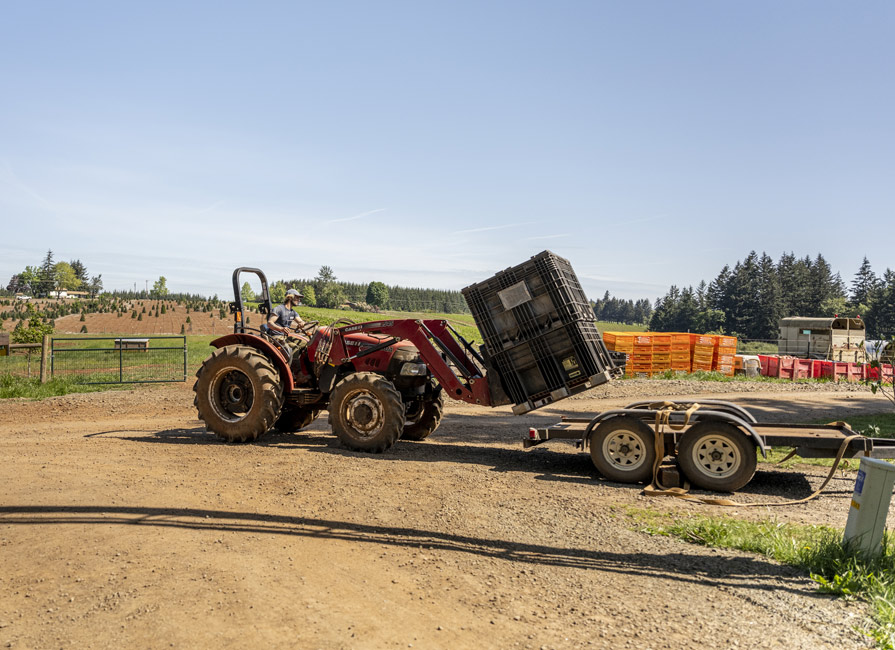One of the key attractions of our Certified Regenerative by AGW program is its practical…
AGW Comments to CDFA on Defining “Regenerative Agriculture”
As you may know, the State of California is working to define “Regenerative Agriculture,” and we want to ensure our perspective is included in this important conversation. A working group is accepting public comments, and your participation is crucial. This is a unique, potentially historic opportunity to help shape what “Regenerative Agriculture” means in California and beyond, especially as other groups with varying opinions have already weighed in.
We encourage you to share your thoughts or amplify our key points to make sure they are heard by both the public and decision-makers. Feel free to use the recommendations in our letter below or write your own. You do not need to be a California resident to participate.
How to Get Involved:
- Submit your written comments to: [email protected].
- The public comment period is open throughout the CDFA and State Board of Food and Agriculture process. September 3rd marks the conclusion of the public comment period for CDFA’s working group draft, but there will be opportunities to provide public comment to the State Board as it goes through its own process to formulate a definition.
- Stay informed and find updates at the California Department of Food and Agriculture (CDFA) website: CDFA – Defining Regenerative Agriculture for State Policies and Programs (ca.gov)
A Greener World Comments to CDFA on Defining “Regenerative Agriculture”
August 28, 2024
California Department of Food and Agriculture
Email: [email protected]
RE: Defining “Regenerative Agriculture” for state policies and programs
Dear Colleagues,
Thank you for your deliberate efforts to engage stakeholders in defining “regenerative agriculture.” While those in agriculture are clearly impacted, this definition has potential ramifications far beyond the stated scope of California’s state policies and programs. Indeed, your work may significantly influence whether regenerative farming actually delivers the sustainability outcomes our planet so desperately needs. It is in that context that we respectfully offer the following comments in response to your invitation.
As a globally impactful nonprofit farm certifier, A Greener World (AGW) promotes practical, sustainable solutions in agriculture by supporting farmers and educating consumers. We believe the way we farm, the nutritional quality of the food produced—and the impact of farming systems on wildlife, the environment and wider society—are all connected. Our growing family of trusted certifications validated by on-farm, third-party audits includes Certified Animal Welfare Approved by AGW, Certified Grassfed by AGW, Certified Non-GMO by AGW and Certified Regenerative by AGW.
Having developed a regenerative standard ourselves (through an intensive five-year process and two-year pilot program), we understand the challenge of creating a definition that is both precise enough to be meaningful and inclusive enough to be impactful. As one of the strongest regenerative standards, we further understand that it would be unfair to limit ‘regenerative’ to AGW’s definition alone and that there must be a range of options to ensure change is accessible. With that, we support aspects of the CDFA Regenerative Agriculture draft definitions but would like to offer the following recommendations based on our decades of experience in agriculture and certification.
From our perspective, in order to have reliability or impact, a definition of “regenerative agriculture” should meet the following three essential criteria. Broadly speaking, at minimum, to be considered “regenerative” a claim should be:
- Meaningful in expectation and impact. Any regenerative definition should require high standards of animal welfare and pasture- and range-based production, which is notably absent from the draft definitions. Feedlots and confinement systems are not regenerative and should be specifically and unambiguously excluded. A truly regenerative system of animal husbandry should not rely on industrial interventions like routine antibiotics and physical mutilations, high-grain diets for ruminants, or breeds which are developed for maximum production in industrial confinement at the expense of animal welfare. For further guidance on animal welfare standards, we invite you to review A Greener World’s certifications linked above. We support comprehensive definitions of soil health and biodiversity, with a focus on maintaining living roots. All too often ‘regenerative’ is conflated with increases in organic matter, yet soil health should encompass more than soil carbon. Biodiversity—including soil biodiversity—is key to a healthy ecosystem, and measuring regeneration should include this vital ecological metric. Genetic modification should be avoided and prohibited. Regenerative should also address the human and social fairness elements of agriculture, as well as impacts on water and air (both in quality and greenhouse gas emissions). Inputs should be rigorously evaluated for risk to the metrics above and prohibited or restricted as appropriate, with time-bound, quantifiable and verified reductions over time. Outcomes should be measured, monitored, and managed for continual improvement.
- Validated by an independent third party. Rigorous third-party certification (of standards aligned with #1 above) should be required as a measure of progress, along with quantifiable, meaningful and verified goals and metrics. Pledges, self-certification and checklists do not work at the policy level or the scale of impact needed. Certification should be administered by reputable certification bodies with audits occurring every 18 months at minimum, incorporating regular physical, onsite inspections and following conformity assessment principles. Without this essential criteria, “regenerative” will continue to fall victim to the same greenwashing that has already undermined other sustainability claims and stymied progress in implementing better agricultural practices.
- Inclusive of different regions, climates, and production systems. To reach the level of impact needed, “regenerative” must meet people where they are. While we are supporters of Organic agriculture, we believe regenerative farming should invite everyone on a meaningful and accountable transition path toward greater sustainability, not just those who are already certified Organic. Regenerative approaches should be place-based, taking into account the specific context of each farm. A regenerative definition should also explicitly recognize Traditional Ecological Knowledge as qualified expertise. Finally, regenerative should be considered holistically and systemically, not as a menu of practices or target outcomes. Improving soil organic matter in isolation, for instance, does not necessarily lead to regenerative outcomes for the ecosystem. If target outcomes are used, we suggest clarifying the extent of adoption needed to be considered “regenerative,” and at minimum a majority of target outcomes, as well as continual progress to reach ecosystem equilibrium.
While the first two criteria are relatively straightforward and self-evident, we believe the third deserves additional discussion in the current context. According to FiBL, certified organic land represents less than 1% of U.S. farmland and just over 2% in Canada. In total, just 1.6% of global farmland is certified organic. With the overwhelming environmental and social challenges facing us, we can’t afford to preemptively exclude the vast majority of land stewards. What if we could restrict and reduce agrochemical use, increase soil cover and biodiversity, lower tillage and emissions, and improve worker and animal welfare on the other 98.4%? The opportunity to be considered “regenerative” should not be limited to those with Organic certification. Starting from an Organic baseline will only limit the impact of ‘regenerative’ to a thin slice of an already-small pie.
Further, organic standards do not require the benchmarking of metrics like soil health, water or air quality, wildlife species and habitats, social fairness, nor measurement over time to show improvements (or otherwise). It is a widely accepted goal of regenerative agriculture to reduce on-farm inputs as the foundation for farm fertility and integrated pest management are built into the system. This intentional reduction of inputs is not found in organic certification. Current USDA Organic standards also do not promote the responsible, high-welfare use of antibiotics, as the complete prohibition on antibiotic use creates the unfortunate incentive to withhold treatment from sick animals to preserve access to the Organic market. The resulting dilemma is unfair, unnecessary and unacceptable for both farmers and animals. Regenerative systems should promote animal health, prohibit routine, subtherapeutic antibiotic use while permitting targeted, therapeutic treatment when needed (as in European Union Organic standards and AGW certifications). Certified Regenerative by AGW addresses all of these principles and more, and a farm can apply both organic and regenerative approaches simultaneously and maintain both certifications. When aligned with the criteria above, regenerative can offer a pathway for farms to transition to organic—while getting credit for their current sustainable practices. With deep respect for organic methods, we recognize the broader benefits of extending regenerative beyond organic farms. Organic practices should be valued and rewarded—and are, through the Organic label. Regenerative practices—which are complementary but distinct from Organic—are also valuable and should likewise be rewarded, independently of organic certification.
What we call ‘regenerative’ practices today are rooted in millennia-old indigenous agricultural traditions that predate organic. While no definition or certification can fully encapsulate this foundational intimate connection to agriculture, we believe regenerative claims meeting the three criteria above can be meaningful, pragmatic and impactful, bringing transparency to food production and the opportunity to create positive change at scale. We sincerely hope you will utilize this definition process toward that goal.We again thank you for your efforts and your consideration of our comments. We invite you to be in touch if we can be of any assistance in your work.
Sincerely,
Emily Moose
Executive Director
A Greener World


